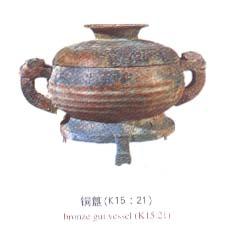1) Zheng Min s Language Viewpoints of Poetry


郑敏的诗歌语言观
3) ZHENG Min's poems


郑敏的诗
4) Characteristics of Poetic Language


诗歌语言的特点
5) poetic language


诗歌语言
1.
On the creation of architectural and poetic space from indistinctness of poetic language;


从诗歌语言的模糊性看建筑诗意空间的创建
2.
As a representative poet of Chinese new poetry,Zang Kejia has practiced the second-time standardization for new poetic language in his 70-year writing,which displays the characteristics of synthetization.
诗歌语言是不同于自然语的语言形态,中国的新诗革命也是以语言变革为标志的。
3.
On the basis of the correspondence between the musical language and the poetic language, the musicality of this lyric poem is displayed through the combination of its stanza form,figures of speech and images.
这首抒情短诗以音乐语言的非语义性、时间性及空间性与诗歌语言的契合为前提,通过民谣诗体、修辞及意象的完美结合,表现出丰富的音乐性。
6) poetry language


诗歌语言
1.
His personality shows thoroughly in his real detailed description in artistic conception and the style of repeated deliberation in the poetry language.
他的现实主义个性化特质,突出表现在意象化的细节真实描写和诗歌语言方面的“苦吟”风格。
2.
Philosophically, both Yang Lian and Yu Jian shared the same idea that an emphasis should be put on the effect of poetry language.
从哲学的高度 ,在感知与存在的关系上强调诗歌语言的作用 ,是杨炼和于坚诗歌语言观的共同特征 ,但二人诗歌语言的具体操作 ,却是大相径庭的。
3.
The poetry language has the very strong fuzziness and possesses the artistic charm that is implicit and refined and simple in language but profound in meaning.
诗歌语言有很强的模糊性 ,具有含蓄蕴藉、旨在言外的艺术魅力 ,能唤起人们丰富的联想和想象 ,便于表达复杂、微妙、丰富的思想感情。
补充资料:河南新郑郑韩故城郑国祭祀遗址

河南新郑郑韩故城郑国祭祀遗址
时代:春秋
发掘地点:河南省豫西山地和豫东扇积平原的交接地带
发掘单位:河南省文物考古研究所
简介:
河南省新郑市郑韩故城是东周时期郑国和韩国的都城,郑国祭祀遗址位于郑韩故城东城西南面,总面积20000平方米,遗址清理出土春秋时期郑国青铜礼乐器坑17座,殉马坑44座、夯土墙基一道,商周灰坑791座,水井98眼,战国烘范窑3座,小型墓葬80座,瓮棺葬28座,两周及汉代灶坑9座,还有一批战国牛肋骨墨书文字从出土。发现了以348件郑国公室青铜礼乐器大都保存完好,精美富丽,件套完整,编钟、编镈138件,多经调音,为实用乐器。此次发掘大大丰富了对春秋时期礼乐制度、郑国铜器等方面的认识。郑韩故城郑国祭祀遗迹的发掘为研究战国文字和仓廪管理制度提供了难得的实物资料。对我国春秋时期的礼乐制度、古乐器学、考古音乐学、乐律史、音乐史和科学技术史等方面的研究,均具有非常重要的价值。
说明:补充资料仅用于学习参考,请勿用于其它任何用途。